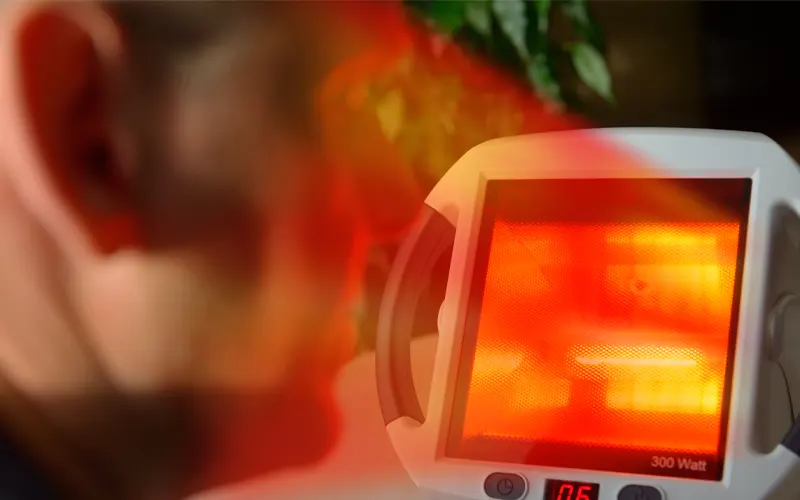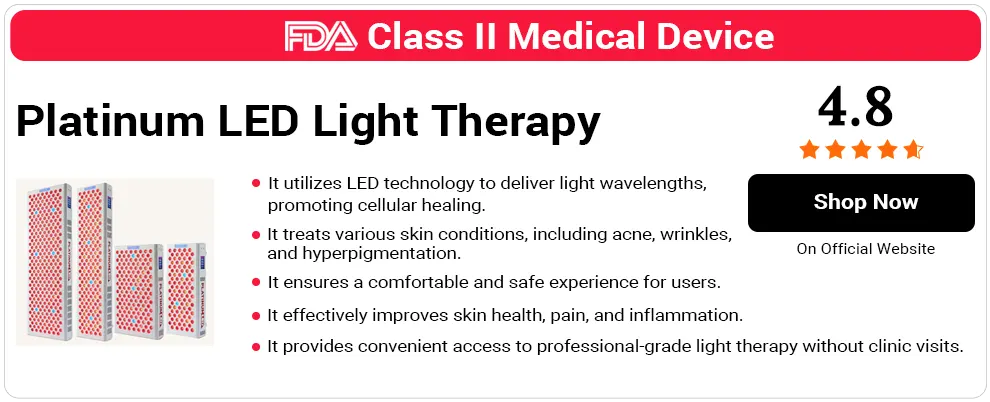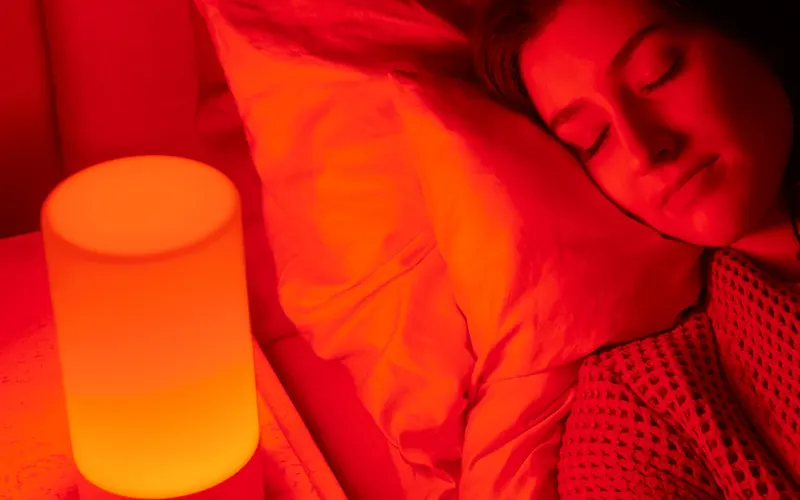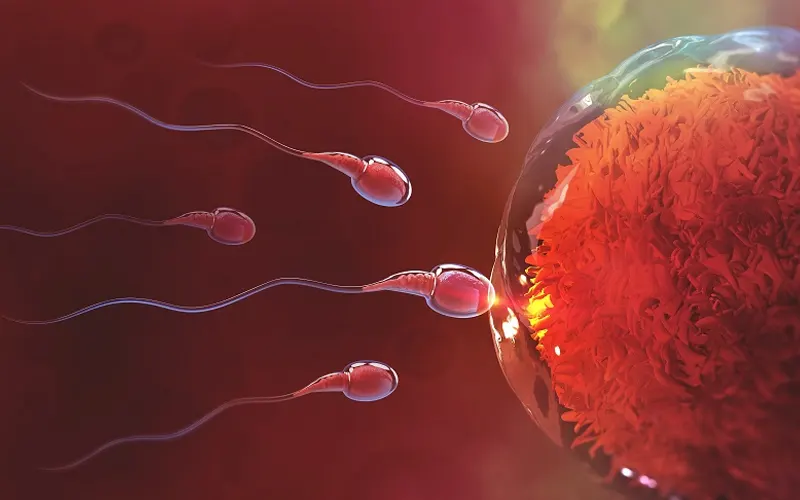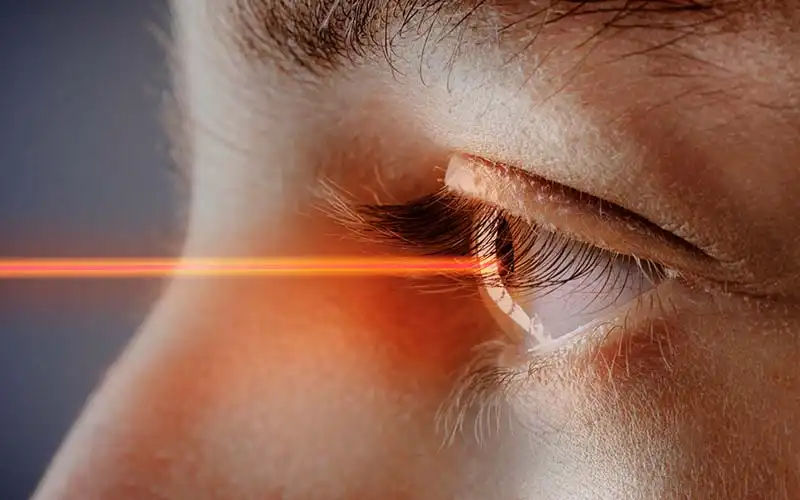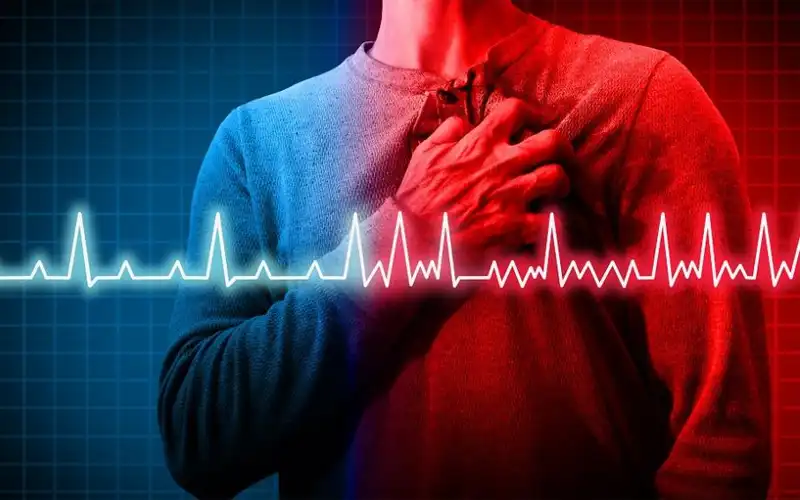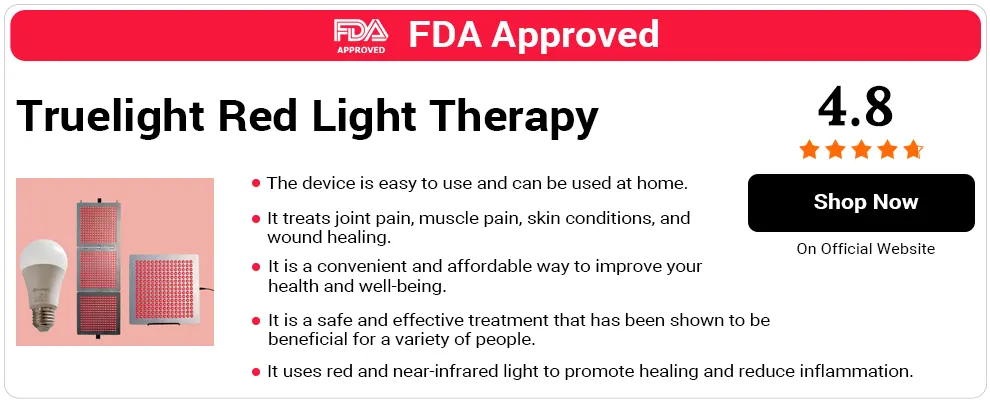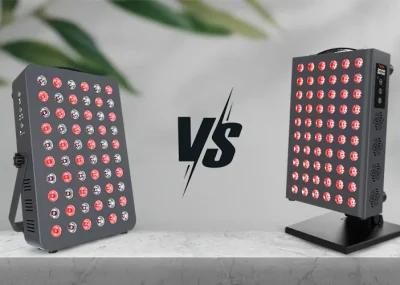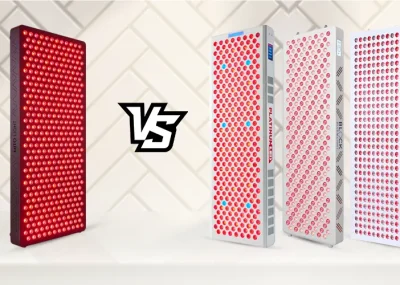Overview: Red Light Therapy and Mental Health
Depression and anxiety are serious mental health problems which, in some cases, may require a multiple treatment approach to manage successfully. If you have these issues you should seek the advice of a physician, who may recommend options like therapy and/or medication.
There are also lifestyle changes that you can make which can positively influence your mood, like improving your diet, exercising more frequently, and taking steps to decrease the amount of stress in your life.
Carlos Escobar, LMHC and Clinical Director says Research indicates that red light therapy may have beneficial effects on mood and anxiety. The mechanism behind this involves the stimulation of mitochondrial function in cells, leading to increased energy production and potentially influencing neurotransmitter levels. Studies have shown that exposure to red light can enhance serotonin and dopamine levels, which are neurotransmitters associated with mood regulation. Additionally, it may help reduce inflammation, a factor implicated in various mental health disorders.
However, did you know that red light therapy benefits depression and anxiety, and may be an excellent complementary treatment? Research supports its efficacy in impacting brain chemistry to enhance mood and lessen feelings of anxiety.
Let’s look at how red light therapy for depression and anxiety may help you to manage your mental health and improve your quality of life.
What is Depression, and What is the Science?
According to the American Psychiatric Association, depression is a serious medical condition which “causes feelings of sadness and/or a loss of interest in activities you once enjoyed.” It may lead to a variety of emotional and physical problems and can decrease your ability to function at work and at home [1].
Depression can vary in its intensity, from mild to severe, and based on the criteria outlined in the DSM IV (Diagnostic and Statistical Manual). It includes a minimum of 5 of the following symptoms for at least 2 consecutive weeks [1]:
- Depressed, sad, or low mood
- Thoughts of dying or suicide
- Loss of pleasure in activities previously enjoyed
- Unexpected weight loss or gain
- An increase or decrease in energy levels
- Sleeping too much or too little
- Difficulty with mental focus and attention
- Feelings of guilt or worthlessness
- Slowed speech or movements, or an increase in purposeless movements like pacing
There are a number of underlying physiological mechanisms which may contribute to the condition. According to the science, one key factor is a shortage in levels of key brain neurotransmitters involved in mood, such as dopamine and serotonin.
Depression may also stem from a decrease in blood circulation to the brain, which lowers oxygen levels, and it may involve a decline in cellular energy caused by a dysfunction in the mitochondria. On the other hand, Vielight focuses on improving blood flow and claims to improve depression and anxiety within 2-4 weeks of the treatment.
A systematic review published in the Journal of Affective Disorders found that red light therapy led to significant improvements in depressive symptoms, with some studies even showing comparable results to traditional antidepressant medications claims a recovery specialist Taylor Wilson. He also added Another study published in the Journal of Clinical Psychopharmacology demonstrated that red light therapy was effective in reducing symptoms of anxiety.
How Does Red Light Therapy Help With Depression?
Red light therapy targets the mitochondria of the cells, stimulating levels of ATP for improved cellular energy. The result is better blood flow to the brain, decreased inflammation, new cell development, and repair of damage.
It also boosts levels of brain neurotransmitters like dopamine and serotonin, for improvements in mood, mental focus, mental energy, and motivation.
A review published in Neurophotonics by Paolo Cassano and Samuel R Petrie, et al examined the use of red and NIR infrared light in major depressive disorder and found evidence that it lowers inflammation and oxidative stress, stimulates neurogenesis, and enhances brain metabolism [2].
Red light therapy works by delivering specific wavelengths of red and near-infrared light to stimulate cellular energy production, claims psychologist Martin Stork. She further added this can lead to reduced inflammation and improved blood flow. These physiological effects are thought to contribute to mood regulation and alleviation of depression and anxiety symptoms.
Zita Chriszto, Licensed Clinical Psychologist, explains “Red light therapy shows promise in managing depression by lowering stress hormones, boosting serotonin, and reducing nitric oxide levels in the prefrontal cortex—a region linked to depression when overactive.”
Further, she highlights a key study titled “Multi-watt Near-Infrared Phototherapy for the Treatment of Comorbid Depression: An Open-Label Single-Arm Study.” In this study, 36 out of 39 participants saw a more than 50% drop in depression scores after 16 weeks, with 32 participants reaching remission—some of whom maintained these benefits for over four years.
What is the Best Red Light Therapy Wavelength for Depression?
The best red light therapy wavelengths for treating depression are red and NIR infrared combined or NIR light alone. A study published in Behavioral and Brain Functions by Fredric Schiffer and Andrea L Johnston, et al found that a single dose of infrared light delivered to the head improved anxiety and depression symptoms in patients within 2- 4 weeks [3].
As we explained in our review of the sad light, light therapy may also enhance levels of melatonin, for improved sleep quality and better mood.
Blue light is not helpful in improving depression, and it could even be harmful. These wavelengths can disrupt your circadian rhythm and negatively impacts sleep quality, which could exacerbate symptoms. Our guide on red light therapy for sleep delves into how this therapy can help balance your sleep cycle and support better mental health, offering insights into its benefits and practical applications.
Is Red Light Therapy Good For Seasonal Depression?
Trent Carter, Nurse Practitioner, FNP-BC, CARN-AP says red light therapy’s effects on mental health are finding evidence. Some reports show us its possible advantages. Stands reported to be symptoms of depression, anxiety, and SAD (seasonal affective disorder) relief of red light therapy. It was proven in different experiments that the mood, sleep quality, and cognitive abilities also improved after the red light therapy was being treated. Nevertheless, there is a golden opportunity to explore and enhance the effectiveness of psychedelic-assisted therapies through rigorous clinical trials to optimize treatment protocols for mental health conditions.
Seasonal affective disorder (SAD) involves low mood in response to a change in the seasons, in particular the darker months in fall and winter. It’s associated with a decrease in levels of light, which contain mood-boosting Vitamin D.
Red light therapy for seasonal depression may help improve the symptoms, but the preferred treatment is use of a white light device which mimics natural sunlight. Sun Box Light improves sleep and also helps to decrease the symptoms of seasonal affective disorder.
A study published in the Journal of Nervous and Mental Disease by Gloria M. Reeves, MD, et al concluded that a one-hour treatment with light therapy improved the symptoms of SAD [4].
What is Anxiety, and What is the Science?
The American Psychological Association describes anxiety as, “an emotion characterized by feelings of tension, worried thoughts, and physical changes like increased blood pressure [5]. It extends beyond typical worry or stress and into fear, and in situations of danger it may even be functional as it prepares you to act.
However, when no threat is present, anxiety can be very disruptive to day to day life and may have a negative impact on social and occupational functioning, behavior, and sleep.
Danesh Alam, MD, psychiatrist and Behavioral Health Services Medical Director at Northwestern Medicine Central DuPage Hospital, explained, “Anxiety is the most common mental health condition seen in our society [6].”
Anxiety disorders may involve a dysregulation in the limbic region of the brain, which is key in emotional processing, leading to heightened stimulation. Low levels of the brain chemical GABA also have a role in the pathophysiology of anxiety.

How Does Red Light Therapy Ease Anxiety?
Red and NIR infrared light impact anxiety in a similar way to depression, by improving cerebral blood flow, decreasing inflammation, forming new neurons, and repairing damage to relevant areas of the brain like the limbic system.
It also increases levels of brain chemicals involved in mood, and in particular GABA which regulates stress and anxiety. This helps to block specific nerve signals to alleviate levels of anxiety and improve functioning.
To shed some light on red light therapy for depression and anxiety, we spoke with Dr. Lea McMahon, Chief Clinical Officer at Symetria. She explains, “Red light therapy is a non-invasive treatment to help people who have been living with depression, anxiety, and substance use disorder. Red light is known to have a beneficial impact on a person’s mood and well-being, so it has been a treatment option since the early 1900s.”
Furthermore, she shared insights into this innovative approach, explaining, Red light therapy can accelerate mitochondrial functioning, and that part of the cell is responsible for energy production. Because of this, this type of therapy can have a positive impact on cognitive function. Which is what it can be used as a type of treatment to combat substance use disorder, as it stimulates energy production.
As with depression, blue light can be disruptive to sleep and concentration, so it is not suitable in the treatment of anxiety.
Is Red Light Therapy Safe for Anxiety and Depression?
Studies showing the efficacy of red light therapy for depression and anxiety also indicate that it’s well-tolerated, and has no serious risks or side effects associated.
For best safety practices, chose a well-respected brand and a device which is FDA cleared. This ensures that the company follows strict guidelines in production and testing. In addition, check that the product has either zero or very low EMF levels.
Explore Lili Reinhart’s personal experience with red light therapy for depression, illustrating its therapeutic effects.
Which Red Light Therapy Products Can You Use For Depression and Anxiety?
When treating depression and/or anxiety with red light therapy, you can use a full body device for optimal overall benefits, or a targeted device.
This may include a smaller panel which you use on your head or on the upper part of your body, or a helmet or headband specific to the treatment area.
FAQs
Q: Is Red Light Good For Mental Health?
A: Evidence supports the use of red light therapy in improving mental health issues like anxiety and depression. The technology may boost cellular energy, improve blood flow to the brain, and boost levels of key mood neurotransmitters like serotonin, GABA, and dopamine.
Q: How Long Does Red Light Therapy Take To Work For Depression?
A: Red light therapy benefits depression in many cases, but the time it takes to alleviate your symptoms will vary depending on the individual and the severity of the condition.
Many people experience results within a few treatments, while for others it takes longer, but the benefits should increase over time and with repeated sessions.
Q: What is The Best Light Therapy Device For Depression?
A: When using red light therapy for depression, the best options are either a full body panel or bed, or a device which targets the head only such as a helmet or headband. For seasonal depression, a lamp which emits white light is best.
Q: Does Light Therapy Increase Dopamine?
A: LED light therapy increases levels of the brain neurotransmitter dopamine, which could have a positive impact on mood.
A study on mice published in The Journal of Comparative Neurology by Victoria E. Shaw and Sharon Spana concluded that NIR infrared light helped to increase levels of dopamine by blocking the toxic agents which lead to its decline [7].
Q: How Does Red Light Therapy Help Mental Health?
A: According to the research red light therapy benefits mental health in a number of ways, by increasing levels of key brain chemicals, improving cerebral blood flow, and boosting cellular energy.
This can decrease the symptoms of depression, lessen anxiety, and possibly offer advantages for other mental health conditions. It also helps reset your circadian rhythm and improve sleep quality, which can have a positive effect on mental health.
Conclusion
Red light therapy shows great promise in the treatment of depression and anxiety, as research supports its benefits in synthesizing key brain chemicals, improving circulation to the brain, lessening inflammation, repairing damage, and promoting new cell growth.
If you have serious symptoms, see a doctor and discuss the inclusion of this technology into your overall treatment plan. You can use red light therapy at home devices such as panels, beds, helmets, or headbands for rapid improvements in mental health, functioning, and quality of life.
For help selecting a device, read our article which recommends some of the leading red light therapy machine on the market today, evaluated by experts.
Additionally, consider exploring The Cera System Review for further insights into advanced technologies that may complement your mental health and memory improvement.

